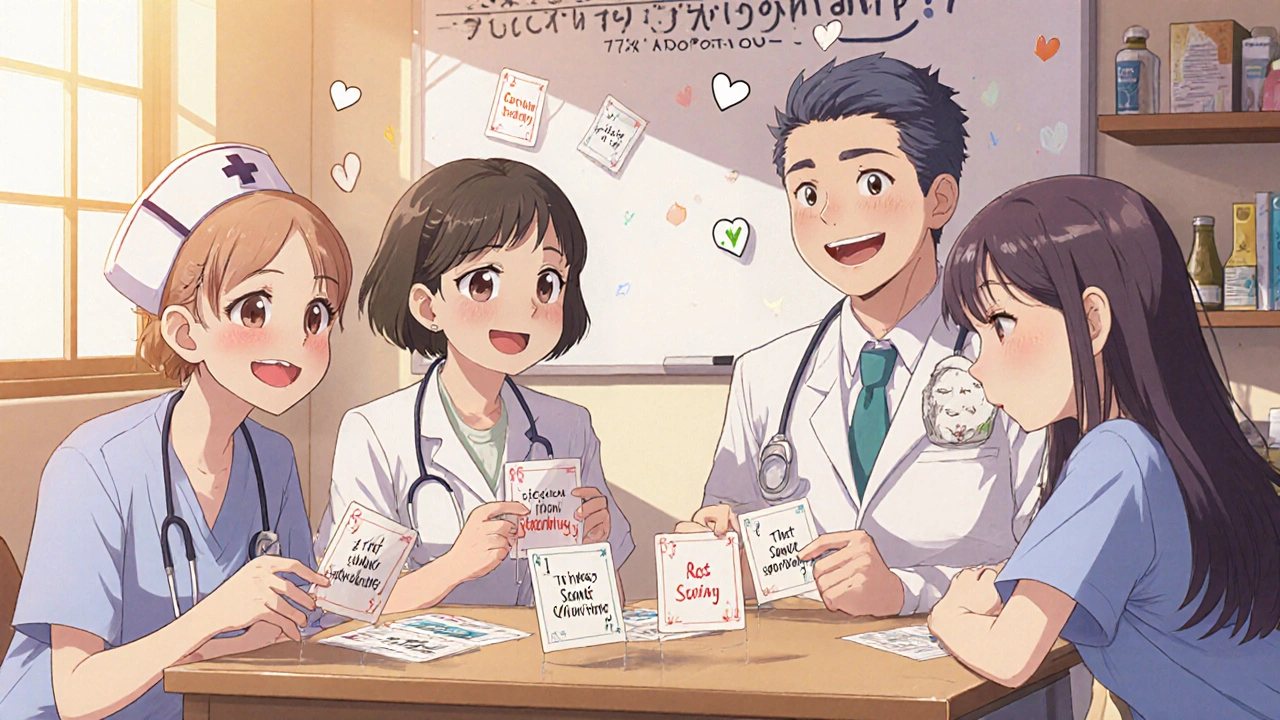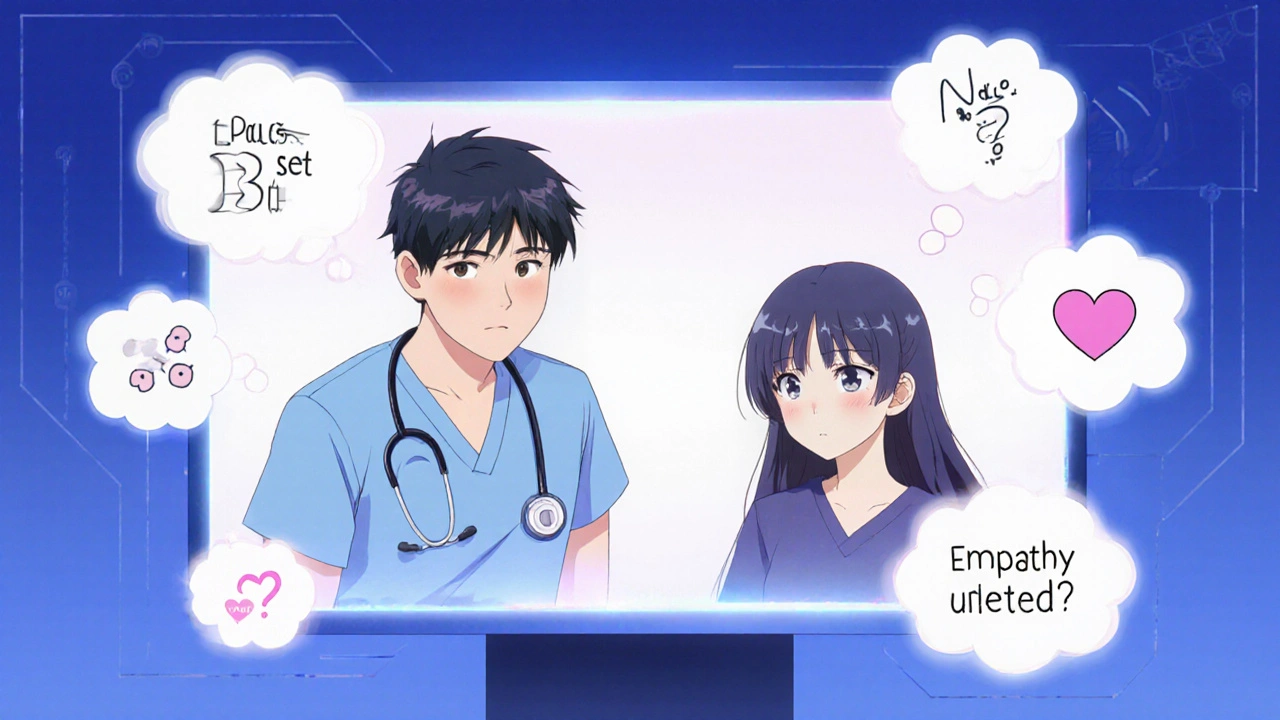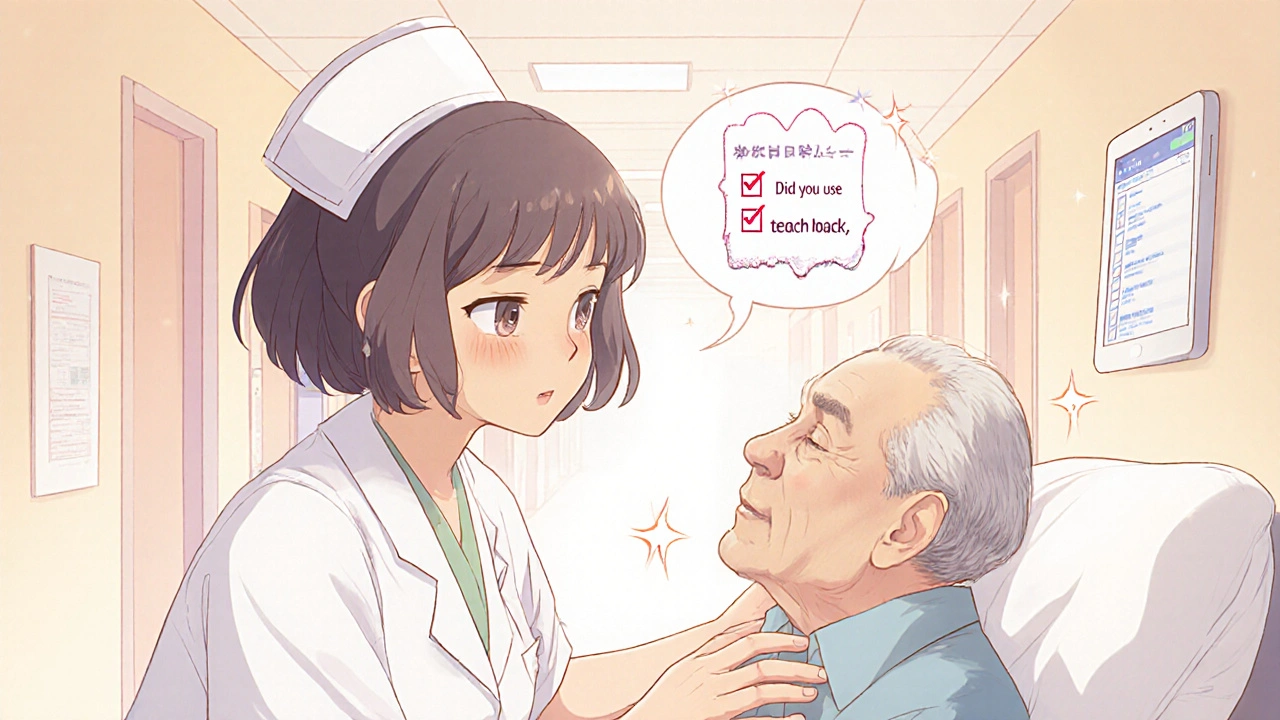Why healthcare communication training isn’t optional anymore
Every year, tens of thousands of patients in the U.S. suffer harm-not because of a wrong diagnosis or failed surgery, but because someone didn’t listen. A nurse didn’t hear the patient’s concern. A doctor interrupted before the full story was told. A discharge instruction was given too fast, too loud, too confusing. These aren’t rare mistakes. They’re systemic failures-and they’re fixable.
That’s where institutional generic education programs come in. These aren’t flashy workshops or one-off seminars. They’re structured, evidence-backed training systems built into hospitals, clinics, and public health agencies to teach healthcare workers how to communicate clearly, empathetically, and effectively. And the data shows they work.
What these programs actually teach
These programs don’t just say, “Be nice to patients.” They drill into specific, measurable behaviors that change outcomes. For example:
- Eliciting the patient’s story: Training staff to ask open-ended questions like “What’s been going on for you?” instead of jumping to “Where does it hurt?”
- Responding with empathy: Teaching phrases like “That sounds really overwhelming” instead of “I understand” which often feels hollow.
- Boundary setting: Helping nurses and doctors say “I can’t stay longer, but here’s what we can do now” without burning out.
- Non-verbal communication: Recognizing when a patient avoids eye contact, crosses their arms, or nods too quickly-signs they’re not truly agreeing.
Programs like the Program for Excellence in Patient-Centered Communication (PEP) at the University of Maryland use real patient feedback to shape their curriculum. They analyzed thousands of surveys and found that patients felt most heard when providers spent just 10 extra seconds-no more-letting them speak without interruption. That’s it. No fancy tech. Just patience.
Who gets trained-and why it matters
These programs aren’t just for doctors. Nurses, pharmacists, social workers, even billing clerks are included because communication breakdowns happen at every handoff.
Take the Society for Healthcare Epidemiology of America (SHEA) course. It’s designed for infection preventionists-people who aren’t usually seen as frontline communicators. But when a patient asks, “Why do I need to stay isolated?” or “Is this vaccine safe?”, that’s a communication crisis. SHEA’s training teaches them how to respond to misinformation on social media, talk to the media during outbreaks, and advocate for policy changes-all skills that kept communities safer during the pandemic.
Meanwhile, the Health Communication Training Series (HCTS) from UT Austin focuses on public health emergencies. After the CDC found that 40% of early pandemic delays were due to poor internal communication, HCTS created free, self-paced modules on how to coordinate messages across departments, avoid mixed signals, and reach vulnerable populations.

The proof is in the numbers
Don’t take our word for it. The data is clear:
- Physicians who complete communication training see 30% fewer malpractice claims (Johns Hopkins, 2019).
- Hospital patient satisfaction scores rise by up to 23% when staff use empathy-based communication (University of Maryland, 2018).
- Patients are 40% more likely to follow treatment plans when instructions are delivered using teach-back methods (AHRQ, 2020).
- Teams using mastery learning-repeating skills until they hit 85% proficiency-retain those skills 37% longer than those who just watch videos (Northwestern, 2022).
And it’s not just about patients. Nurses who took Mayo Clinic’s boundary-setting course reported a 40% drop in burnout within three months. Why? Because they stopped feeling guilty for saying no. They learned how to say, “I can’t do that now, but I’ll get you help in five minutes,” and meant it.
What’s missing from most programs
Despite the progress, big gaps remain.
First, time. Most clinicians are squeezed into 10- to 15-minute appointments. Even the best communication skills won’t help if you’re racing against the clock. One study found doctors interrupt patients after just 13.3 seconds-even after training.
Second, equity. Sixty percent of current programs don’t address cultural differences, language barriers, or health disparities. A 2023 AHRQ report showed a 28% gap in communication satisfaction between white patients and Black, Hispanic, and Indigenous patients. Programs that ignore this aren’t just incomplete-they’re harmful.
Third, follow-through. Only 12% of programs track whether skills are still being used six months later. Training without ongoing support is like giving someone a tool and then taking away the manual.
How hospitals are making it stick
The most successful programs don’t stop at training. They build communication into the workflow.
Northwestern University’s model requires medical students to complete 4 to 6 simulated patient sessions during clinical rotations-with feedback after each one. They don’t pass until they hit 85% proficiency. It’s intense. But it works. Residents in that program had 28% fewer patient complaints.
Mayo Clinic embeds communication prompts directly into their electronic health records. After a patient visit, the system asks: “Did you use teach-back?” “Did you check for understanding?” “Did you acknowledge their emotions?” It’s not optional. It’s part of the chart.
And at the University of Maryland, they trained “communication champions”-volunteer staff from each unit who model good practices, coach peers, and keep the momentum going. Adoption jumped from 30% to 73% in one year.

The future: AI, telehealth, and mandatory training
Change is accelerating. In 2024, the Academy of Communication in Healthcare (ACH) started piloting AI tools that listen to real patient encounters and give instant feedback on tone, pacing, and empathy cues. Early results show learners master skills 22% faster.
Telehealth is forcing new skills too. How do you read body language through a screen? How do you know if a patient is nodding because they understand-or because they’re too embarrassed to say they don’t? New programs now include virtual communication modules.
And regulation is catching up. The Centers for Medicare & Medicaid Services now ties 30% of hospital reimbursement to patient satisfaction scores. The Joint Commission requires communication protocols. The National Academy of Medicine recently declared communication a core healthcare function-like oxygen or blood pressure monitoring.
Soon, communication training won’t be a bonus. It’ll be a requirement.
What you can do today
If you’re a patient: Ask your provider, “Can you explain that one more time?” or “What’s the most important thing I need to remember?” You’re not being difficult-you’re helping them do their job better.
If you’re a provider: Start small. In your next patient visit, pause for three seconds after they speak. Don’t rush to respond. Just listen. That’s it. You’re already doing better than most.
If you’re in leadership: Don’t just buy a course. Build a system. Train champions. Embed prompts in your EHR. Track results over time. And never forget: communication isn’t soft skill. It’s a clinical skill.
Why this matters for everyone
Healthcare isn’t about machines or medications alone. It’s about people talking to people. And when those conversations go right, lives improve. When they go wrong, people die.
These institutional programs aren’t perfect. But they’re the best tool we have to fix a broken system. And they’re growing-not because they’re trendy, but because they save lives, reduce costs, and restore trust.
It’s time we treated communication like the life-saving intervention it is.
Are healthcare communication programs only for doctors?
No. These programs train everyone involved in patient care-including nurses, pharmacists, social workers, administrative staff, and even billing personnel. Communication breakdowns often happen at handoffs between roles, so training the whole team reduces errors and improves continuity of care.
How long does it take to see results from communication training?
Some improvements, like patient satisfaction scores or staff burnout levels, can show up in as little as 3 months. But full skill integration-where communication becomes automatic-typically takes 6 to 12 months. Programs that include ongoing coaching and real-time feedback see faster and longer-lasting results.
Do these programs work in rural or underfunded hospitals?
Yes, but they need adaptation. While 68% of large hospitals have formal communication programs, only 22% of rural facilities do. Free, self-paced options like UT Austin’s HCTS and open-access tools from ACH are helping bridge the gap. The key is using low-resource strategies: peer coaching, brief video modules, and embedding prompts into existing workflows rather than adding new steps.
Is communication training just about being nicer to patients?
No. While empathy is part of it, these programs focus on measurable, evidence-based behaviors: asking open-ended questions, using teach-back methods, recognizing non-verbal cues, and managing difficult conversations. These aren’t about being polite-they’re about reducing misdiagnoses, improving adherence, and preventing avoidable hospital readmissions.
Why don’t more hospitals implement these programs?
The biggest barriers are time, funding, and resistance. Many staff feel they’re already overworked and don’t see communication training as urgent. Only 42% of hospital programs have dedicated funding. Leadership buy-in is critical. Programs succeed when leaders tie communication metrics to performance reviews and patient safety goals-not as an add-on, but as a core responsibility.
Can AI really help improve communication in healthcare?
Yes, but as a tool-not a replacement. AI systems can analyze recordings of patient visits and give instant feedback on how often a clinician interrupts, uses jargon, or misses emotional cues. Early pilots show learners improve faster. But AI can’t replace human connection. It’s most effective when used alongside coaching and practice, not instead of it.
